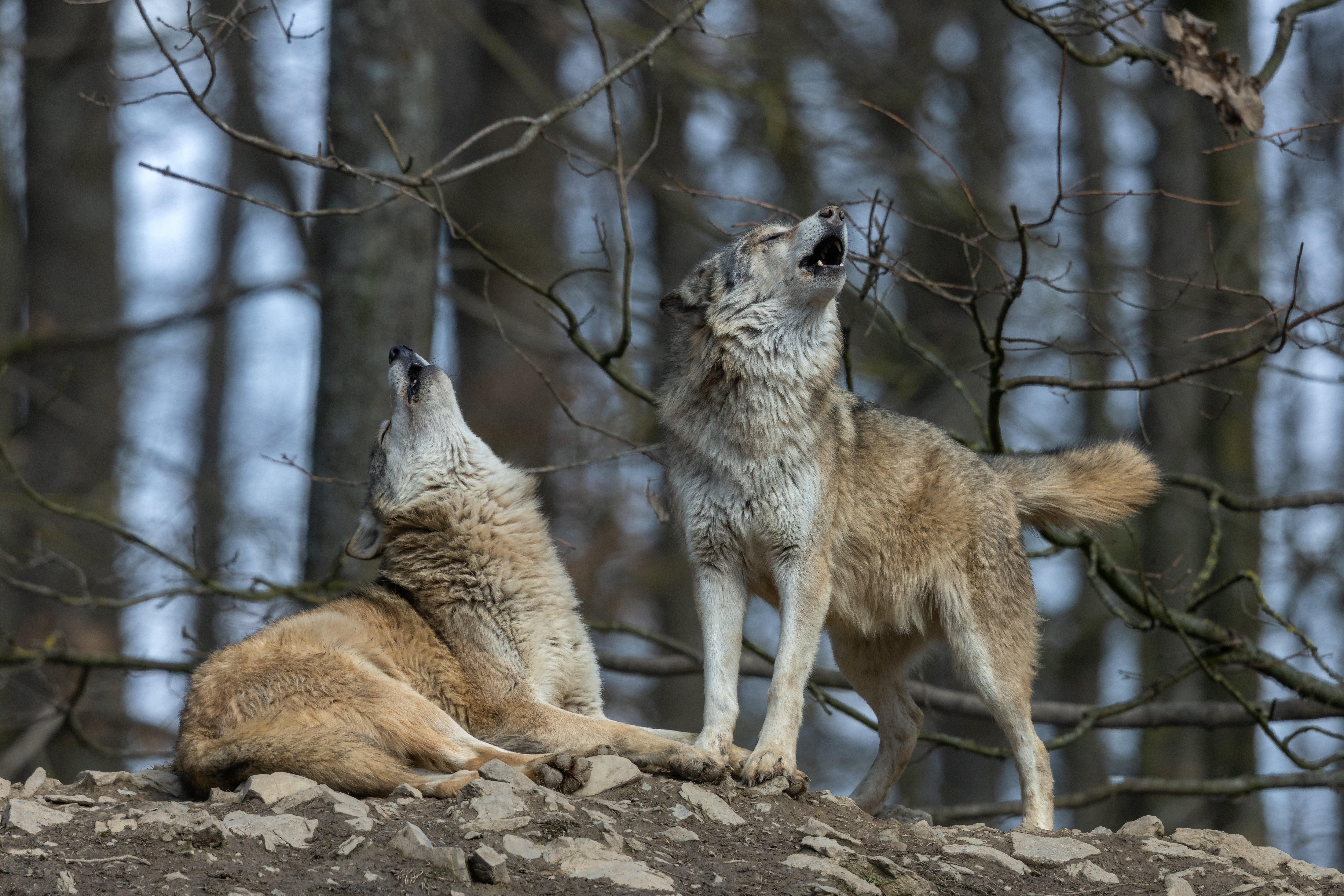Awoo! Let’s welcome our best friend back to the wild
There are now wolf packs happily living in far more densely populated countries than Scotland, including in France, Belgium and Germany, writes Donnachadh McCarthy


One of Britain’s most distinguished rewilding pioneers has issued a 2023 new year challenge to Britain – a stretch goal to reintroduce our native wolf by 2043.
Alan Watson Featherstone, founder of the rewilding Trees for Life project in the Scottish Highlands (An Gáidhealtachd), believes that in order to restore health to Scotland’s devastated ecosystems, the return of extinct carnivores such as the lynx and wolf is necessary.
Healthy ecosystems depend on three levels – or trophic groups – being in balance with each other: a prodigious and varied supply of plant foods, herbivores who graze on them and carnivores who feed off the herbivores.
In Scotland, the top trophic level has been obliterated with almost all native mammalian carnivores removed, including wolves, lynx and bears. This has resulted in wild herbivores such as red deer exploding in numbers, and alongside them, millions of domesticated sheep being introduced. Thus, Scotland’s middle herbivore trophic level ballooned out of all proportion.
It devastated plant life, with almost everything other than grass and bracken eaten to extinction. And with that, much of the web of life that was dependent on plant biodiversity – from fungi to insects to small mammals and birds – disappeared.
Watson Featherstone first became aware of this ecosystem collapse when he visited the remnants of the great Caledonian Forest in the 1980s. Only 1 per cent of the original forest remains.
He described a dying forest with only ancient century-old trees remaining, as the deer and sheep were eating every tree shoot that sprouted from the earth. The devastation inspired him to promise a conference in 1986 at the Findhorn Foundation, a conscious spiritual community in the Highlands where he lives, that he would set up a project to save the forest.
Findhorn, from its foundation, has advocated for our spiritual connection with nature to be restored. Watson Featherstone regularly spends time meditating in nature and says this helped him recharge, through decades of effort to restore the forest, without burning out. When he started the now world-famous Glen Affric rewilding project, he had no money, expertise or funding. But he says if you follow your heart’s calling, people will appear and help in a myriad of ways. But to get Glen Affric back to being a fully healthy ecosystem, it needs the return of the exterminated predators.
Whilst wolves only kill about 10 per cent of the deer that they chase, the chasing is what really helps biodiversity restoration, as it forces the deer to keep moving and prevents them overgrazing any single habitat.
He chose 2043 as his target date for two reasons. It will mark the 300th anniversary of the reputed killing of the last Scottish wolf, ironically in the Findhorn River valley. And because he says it will take that time to create the cultural change needed among the public to support the wolf’s return.
Human culture has made the wolf the repository of all our fears of nature, from the devouring wolf in Red Riding Hood to the demonic werewolves in movies. Yet, ironically, dogs are also literally domesticated wolves and celebrated as our best friends...
Since the fall of the Iron Curtain, which provided a physical barrier to their recolonising of western Europe, the wolf has naturally reclaimed much of their former European territories. There are now wolf packs happily living in far more densely populated countries than Scotland, including France, Belgium and Germany. But their return to Britain is blocked not only by the English Channel, but the might of British governments, with layers of bureaucracy keeping them out.
As rewilding is a devolved power for the Scottish parliament, we approached the Scottish parties to ask if they would support Alan’s 2043 goal for the restoration of Scotland’s wolves. The Green Party said: “We support in principle re-introduction of native species such as lynx and wolves, where habitat exists to support them and in partnership with local communities.”
The Lib Dems said: “We passionately believe that we should restore biodiversity.” But then confusingly added: “There may be situations where reintroducing species that have already vanished from our landscapes is part of the solution.”
We got no reply from the SNP, Labour or Conservatives, despite asking during the week Cop15 on biodiversity was meeting in Montreal.
Disappointingly, RSPB Scotland, which is already playing a major positive role in many reintroduction projects, said: “We would not support the imposition of an arbitrary deadline on wolf reintroduction. Without strong support, such initiatives risk being compromised. The time needed to build such support cannot be preordained.”
Watson Featherstone was clear that the momentum to achieve reintroduction must come from the grassroots. He said that we could all help by doing two things: lobby the nature conservation charities to promote wolf restoration and support those working hard now to reintroduce the lynx.
The conservation charities need to backcast preparations for the return:
- Train the necessary zoologist wolf experts
- Identify source wolf population closest to extinct Scottish wolf
- Identify optimum release sites
- Educate the public on ecological necessity for its return
- Work with sheep farmers and government on compensation schemes
- Lobby government to set up a native species restoration fund
Watson Featherstone said that when people see the successful return of the smaller lynx predator, then they will be ready for the wolf. Listening to him, your heart cannot help but know we will once again hear the wolf’s howl echo off the Scottish Munros, after centuries of silent absence. Would that I could live to hear that day!






Join our commenting forum
Join thought-provoking conversations, follow other Independent readers and see their replies
Comments